“As forests disappear, so do their inhabitants, who are linked by strong bonds of co-dependence. Due to overwhelming human influence on nature, 80% of Lithuania’s old growth forests have disappeared, along with many of the species that used to live in those places” — this is how the founders of the Ancient Woods (also known as Sengirės fondas in Lithuanian) Foundation describe a major problem in Lithuania, which has long been lingering in our minds, like the leaves in the wintertime beneath the forest turf. However, the people who founded the Ancient Woods Foundation are trying to change the situation for the better: to preserve the old-growth forests and our consciousness. Although every great idea and ambition requires a lot of work and effort, “If you believe in what you are doing, it all works out in the end”, says Mindaugas Survila, founder of the Ancient Woods Foundation.
Mindaugas Survila is a Lithuanian naturalist, cinematographer, filmmaker, founder of the Ancient Woods Foundation and the creator of film The Ancient Woods (2017). He works tirelessly for the preservation of forests and has the patience to sit in a tree for 16 hours to make a film that has become the most watched documentary in the history of Lithuanian cinema.
Many people didn’t even know the word “sengirė” (eng. old growth forest) before your film. We are used to familiar names like forests or groves. What is the difference between a forest and an old growth forest? How does a forest turn into an old growth forest?
“A forest is a normal forest that the human eye sees. The definition of ancient woods would be: a forest that grows, dies, grows, dies again without any human intervention. A forest lives for two generations. Depending on the type of tree, for example, an alder forest that is two hundred years old can be called an old-growth tree, while an oak forest needs to reach one thousand two hundred years old to be called ancient. It’s not really surprising that you haven’t heard that word before, because old-growth forests are very rare. Forests have always been human’s main raw material for building. For example, when Lithuania was under occupation, whether it was Tsarist Russia or the Germans, it was very convenient to exploit this resource and sell it. A forest grows very quickly, whereas an old growth forest is extremely slow, takes several hundred years to grow, and can be harvested very quickly and sold quite expensively. For these reasons, there are very few old-growth forests in Lithuania. There is no such thing as a true old-growth forest that meets the definition 100%, however, there are some forests that already have a number of features that meet the definition of an old-growth forest. We have asked scientists how many forests there are that have an average age of more than three hundred years, the age of an old-growth forest, and there are no such forests, but for an average age of two hundred years or more, there are only 64 hectares of such forests in Lithuania. If we were to compare, before human intervention, about 80-90% of Lithuanian territory was made up of ancient woods, and now those 64 hectares are 0.0009%, so there are very few old growth forests left, and it is up to us to decide whether they will survive or not. Even now, the oldest groves have survived only because they are located in difficult-to-reach areas. For example, regions with steep slopes and rivers flowing below, or wetlands and forests on islands — in other words, where forests have natural protection, that is where they have survived. Unfortunately, nowadays technology can do almost everything, and nature can no longer protect itself. Either we protect it, or the old-growth forests will continue to disappear and move further east. In the West, they have long been extinct, but in Lithuania we are on the verge of having the bits and pieces that we can revive, or, if we fail at that, the ancient woods will just move further away from us to the East, to the North.”
This means that one can be both the threat and the protector of nature.
“It depends on one’s point of view because human beings are super dominant, the term here is biological, ecological. A person imagines that they are in control; they can destroy forests, they can do many more things, but then along comes the itsy-bitsy virus called corona and look, that person is no longer all-powerful. In fact, a lot of things depend greatly on human actions and inactions.”

All your work to save ancient forests began with the 2017 film The Ancient Woods. How was it filmed?
“This is a very broad question, because as many scenes have been filmed, there have been different methodologies of how to film them. For example, where there is a low ground shot, there are ravens and eagles in the snow, so to film them you have to set up a tent, then you have to actually come into that tent at night so that they can’t see you. The problem is that you may have to sit in a tree and watch the situation for two days, because these white-tailed eagles are the largest birds in Lithuania, with two meters and forty centimeters across their wing tips. If anyone has seen Arvydas Sabonis (famous Lithuanian former professional basketball player) in the flesh, if you take that height and add 20 centimeters, that is the size of the eagle. Therefore, it is quite difficult for such a bird to land, it needs a lot of space, and it is quite difficult for it to also get up, so it can squat in a tree for a couple of days and just observe. Meaning, if you wait and wait, eventually an eagle comes out in the middle of the day, that’s it, the eagle will never land there again. If you come in at night, you have to go out at night. Realistically, you have to sit for sixteen hours. Let’s say you sit in minus five degrees, which seems like a very small thing to a person, but when it is that temperature you can dress for it and walk around in the woods, but the problem is that you cannot move at all when you are observing, and if it is minus five degrees and you have to sit in a bus stop for thirty minutes, the cold starts getting to you. In winter you have to sit for sixteen hours. Obviously, you suit up as much as you can and wait, but in the end, the cold seeps in. That’s what happens in winter. Then, when you’re filming near the nests, the most important thing is safety, the safety of the birds themselves, so that you don’t frighten them.”
“To make sure that doesn’t happen, we put up tents either in winter or autumn, camouflaging them as much as possible so that the birds can’t see them, and people can’t see them from the ground. Then the birds come and start nesting, and we can start filming them when the chicks wake up. This can be done knowing the biology that one of the big birds or the same black storks is always at the nest, either the male or the female. The male carries branches, fish, and the female tears the meat or the fish into pieces and gives it to the chicks. How do you approach the nest without scaring it? After all, one of the parents is at the nest all the time. Just the two of us come in at night, my colleague waits, and the bird doesn’t hear, but you can hear that someone has come. When I’m ready, I signal to my colleague, and he leaves. That way the bird hears that something has come and then went away. You have to approach them little by little. One problem, however, is that the nights are very short in summer, that means that you have to sit in a tree for twenty-three hours. So, you sit and wait.”
Isn’t there any tension when filming? As I understand it, everything has to be done on a dot, thus it’s a heavy responsibility whether you catch the shot or not.
“Tension won’t help much, it’s still impossible to stay fully alert all the time. You may try to stay awake, but then you won’t have the strength to film. With time, you develop a sixth sense. For instance, you can already tell from the behavior of a stork or a white-tailed eagle that one of the parents is approaching the nest, but in the case of a hen harrier you can’t understand anything at all, because they live in such a crowded environment and can’t see what’s going on around them. Just “poof!” and it is in the nest. It takes three seconds to switch on the camera and fire it up. It is impossible to film everything. Sometimes you sit there, and you think, oh, I’ll turn on the camera. I turn it on, and the bird comes right away. It’s like sixth sense. Though sometimes there’s a feeling, but when I turn on the camera nothing comes. It depends on your luck.”

Your film is very poetic, especially the opening scene where the forest seems like the universe itself. The film won an award for its soundtrack, which gives the impression of a primeval space. This is your vision of the forest as a filmmaker. You are working for a cause that is important to Lithuania and to humanity, but I am curious to know what the forest means to you personally? How do you feel about it?
“I’ll let it be a secret that you are one of the few who have guessed the primordial space, the cosmos, because there are a lot of people who didn’t understand it. What I wanted to create at the very beginning was the creation of the world: in the beginning there was nothing, then there were little souls, little spirits that fly in the sky and then it stops to look up at the stars, and so the world is created. You caught onto that very well. It is difficult for me to say what the forest brings. Sometimes I stay at home for too long, I get irritated, and my wife says: “OK, go to the forest, it is time for you to go”. It puts everything in its place, because when you are at home, on the computer most of the time, you don’t realize that it’s important, you don’t prioritize well, but when you go to the forest, it’s all clear right away. It’s like purification. Then there was one other incident. I was filming one of the shows and before the filming I got drunk. The make-up artist grimaces at me, and my eyebrows are often blackened. She puts on some cream and says: “You know, I thought a person would come out of the woods like a saint, with a bright face.” Yes, many people associate the forest with fun, recreation, but for me the forest is often just a job.”
During the pandemic, people have started going to the forests more often; due to that there were fewer road accidents where animals were hurt, aquatic life started recovering and there was a noticeable reduction in air pollution. Do you think a slower pace of life could be a solution to ecological disasters? How do you think humanity needs to change in order to avoid an ecological doomsday in the next fifty years?
“There are actually people who are thinking about it, and it is slowly reaching the political level. Not yet in Lithuania, but in the European Union, where it is being said that at least 30% of the territory must be protected, and 10% of the territory is strictly protected. Here in the European Union. If at least 10% of Lithuania’s territory were reserves and forests, then it would be much better for all biodiversity. For example, what is the difference between a pyramid and ancient woods? We can dismantle the Egyptian pyramid and put it back together with technology. But if we cut down the ancient forest, then it will only grow back in about three hundred years. It takes a very long time. I am very pleased that there are people in the European Union who are saying: “Wait a minute, let us stop, we need to sort things out”. Now it is up to Lithuania and how we define ‘strictly protected’ in Lithuania. I very much hope that ‘strictly protected’ will be nature reserves. As for the claim that the quarantine contributes to the ecology, yes, there were a lot fewer planes flying, but one of the biggest furniture stores barely manages to keep up during the quarantine, because there are so many orders. Again, trees have to be felled to make furniture. So, it is a two-way thing. Basically, the fact that people are discovering forests and discovering Lithuanian nature is a very good thing, because people protect when they love, and love when they know. Quarantine gives you a good reason to get out and get to know, that is why some people fall in love with the forests.”
What would you say have been your key achievements in the fight for the preservation of the old growth forests in the time following the film’s premiere?
“Maybe I should first answer the question why the Ancient Woods Foundation. I have always wanted to do more than just educate the public: from the fifth grade onwards, I used to write research papers together with my teacher, take pictures and talk about what lives in the forest. It was like education. Then, after I graduated and after I created The Field of Magic, it was time for The Ancient Woods. It was also an educational project, because we wanted to show that a forest cannot be valued only in terms of hard meters or money, but that the forest itself is worth much more. When we made The Ancient Woods, we saw how many people came to watch it on the first weekend (today it is the most watched Lithuanian documentary in the history of Lithuania), and we realized that we could do something practical, not just idle talk. That’s when we decided to set up the Ancient Woods Foundation. Half of the money we earn we give to other projects, and the other half we give to the forest and Ancient Woods Foundation. Why did we set it up and why don’t I buy the forest myself and start protecting it? Human life is very short compared to the life of a forest, in 30 years, I don’t know how long I will live, but when I die, I don’t know how my children will want to deal with that forest. That’s why we set up the Foundation, to make that transition. So, when I die, my voice goes to the Ancient Woods Foundation. Inside it, people will choose a new person of impeccable reputation who will continue to look after the forests. Our achievements are the foundation that we have set up, and it will soon be a year since it was set up. So far, we have allocated 60 000 euros from the film and people have already donated over 60 000 euros. Let’s say, for me as a person, €60 000 or €3 000 is a lot of money. But for a forest, it is very little money. That is why we are trying to make that money as precious as possible and buy as much forest as possible to preserve it. If we had billions, we would buy up all the forests and sooner or later they would turn into old growth forests. We do not have that, and we are trying to cherish what we have. It has been difficult to choose where we will try to buy up forests. Therefore, we sat down at the computers and selected the most valuable forests in Lithuania, because there are databases that list everything, and then our biologist, Ainis Pivoras, went round all those forests and ranked which ones would be the first to purchase. Now we have identified the plots, found the owners, and have already started the acquisition processes, because these processes take a very long time; once you have an agreement with a person, you have to go to the National Land Office to get the permits, and the permits come after a couple of months or longer, it varies. Right now, we are already waiting a couple of months. We are also very grateful to Professor Vytautas Smailius from Kaunas for donating the first plot of land, which is growing near Kaunas, outside Garliava. There are two more plots that people would like to donate. We are happy that people trust us and entrust us to protect the ancient forests. Also, as I said, they protect when they love, and they love when they know, so a lot of our focus is on education, mainly social media, just telling people about the forests, about the value of the forest, about their inhabitants. On Facebook, we are called “Sengirė / The Ancient Woods”, and you can also find the information on Google. We have an Instagram that is slowly growing it. We are very happy that so many people are contributing to this foundation.”

Congratulations on so many accomplishments. When you think about it, this is just the beginning. However, as you have already said, the lifespan of a forest, and especially of an old growth forest, is far longer than that of a single person. What results do you hope to see in your lifetime and what is the final vision of the project?
“There is no end point. The intermediate target is 2500 hectares for Ancient Woods Foundation. This is as much as can be acquired by one legal entity in Lithuania and under Lithuanian law. Nonetheless, this requires an insane amount of hard work, and we hope to reach this number within our lifetime. We have talked to the strategists, because as a theoretician you can say, oh, I want to protect the forests, but you need to know how to attract the public, how to present yourself, so we are overjoyed that Synthesis Consulting Group helped us in the beginning. They are the kind of strategists who see very far ahead and analyze. In their practice, the main sponsors come after five years. At the beginning you are monitored, you have to work, and after five years the whole process speeds up a lot. To be honest and frank, I was expecting people to donate €5 000 or so this year, and today it is over €60 000. The popularity of the film The Ancient Woods also shows that the Lithuanian have forests in their genes and that they need and love it. We are very pleased that so many people have joined in and are offering all kinds of ideas and actions and things are only moving forward.”
You mentioned that when your time is up, you will pass the torch on to another trusted person. But are you absolutely sure that even after you leave the helm of the organization, the main purpose of the Ancient Woods Foundation will remain forest conservation?
“We have thought about it. The organization and its principles are defined by its statutes. As it says, it shall be. The statutes state that the forest cannot be mortgaged, sold and there are many other things, which I will not list, but it notes that the forest cannot be lost in any way. If you change the statutes, then you change the provision. We are the founders and we have specified that there must be a norm in the statutes, that is to say, founders who have ten votes each, and then there are the guardians who have one vote each. For the organization itself to function, the votes of the founders are enough, but for the statutes to be changed, the guardians will also be needed, and there will be many guardians. For that reason, you cannot get signatures from all the guardians to change the statutes. Anyway, there are lots of safeguards. In America, there is a law on community forests, which defines that the community owns the forest, and you cannot cut it down. In Lithuania, there is no such law, that is why we try to lump everything under the umbrella of a ‘public enterprise’, and that enterprise has to be owned by somebody. It is the founders who own the whole organization and its assets. However, if I were to go bankrupt, the articles of association say that people cannot take more than they have contributed. Therefore, I cannot take more than €10 out of the Ancient Woods Foundation. Legally, if you go to buy milk and you are married, you go to buy milk with your wife. Legally. Hence, our other halves have signed documents promising not to claim any part of the Foundation. There are all sorts of safeguards put in place to make sure that as years go by, as generations change, that idea stays the way it was originally.”
It’s all really thought through.
“We try to think carefully. There have been similar cases in America where people have bought a forest and started to protect it, and then 50 years later they handed it over to the state, because the forest has already added much more value. The state can no longer do anything about it because people believe and trust in it. It is just that the value of the forest has built up over the years. We hope that people will pay a visit to these forests and that this will be another additional safeguard.”
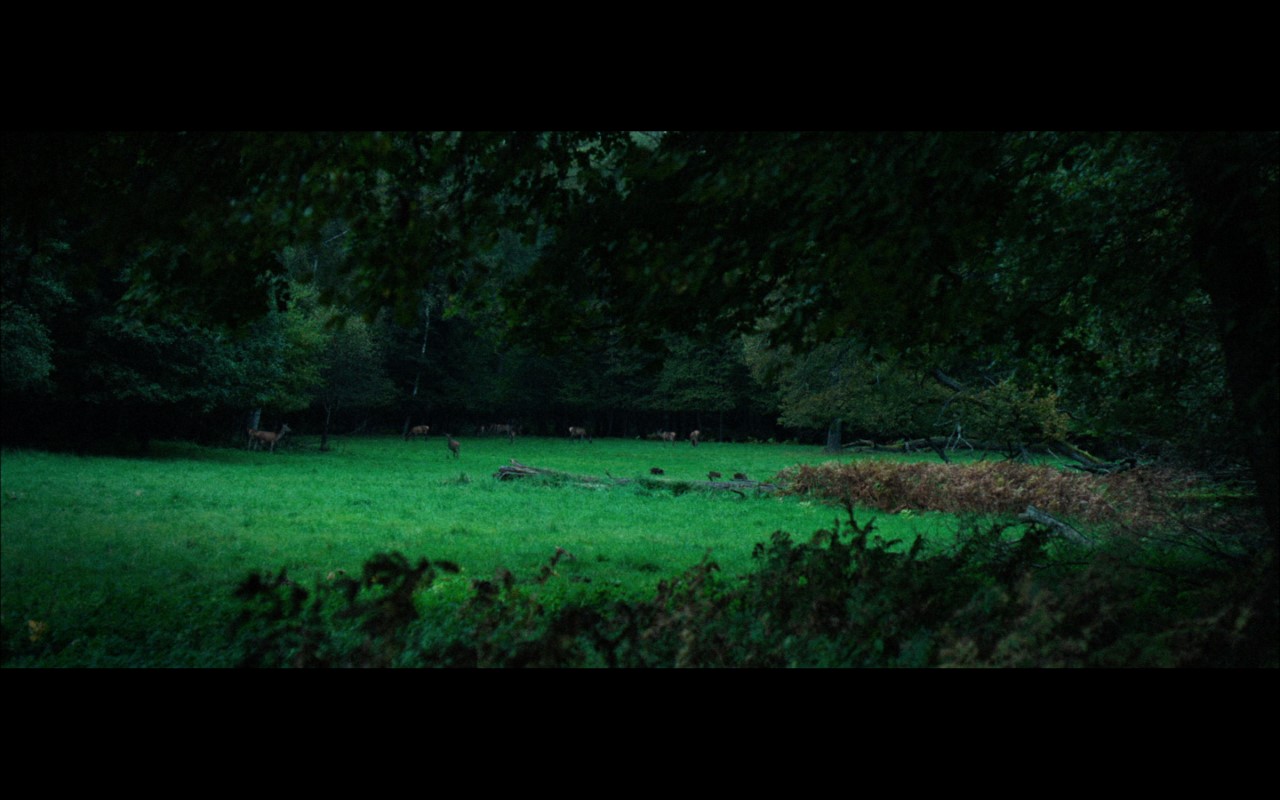
You define an old growth forest as “a space where people do not cultivate or save the forest according to their own understanding, where all organisms are equal, and none are called pests”. Could you comment further on this definition?
“It would take me a couple of hours to comment fully, but I will try to be very brief. We have all heard what is happening in Belovezhskaya, how the spruce trees are drying up there, and there are some very dramatic photographs of them drying up in whole areas. Why has this happened? The answer is very simple. The Belovezhskaya forest has also been cleared and replanted. In fact, where those spruces are now drying up, they were planted by man, and they are the same age. When there are trees of one species and one age, it is very easy for bark beetles to jump from one spruce tree to another, because they only need spruce trees. And because the spruce trees are of the same age close to each other, the bark beetles have the perfect environment to spread. An old growth forest forms on its own without human intervention. There is fierce competition. If there is a patch of land, a seed or other drops from all the trees and only the one that is best adapted to the conditions grows. Selection takes place over many years. If a person plants a forest, it must be thinned. He goes and raises his head, and it is a matter of seconds which tree he will cut down. He leaves the most beautiful, the straightest, the one that will be most useful for planks. When the forest replenishes itself, the selection process goes on for twenty years, and the most adapted tree wins. There are storms in Lithuania that uproot whole blocks of trees. You notice what kind of trees the wind blows over; they are all the same size, the same kind. There are some forests that are so young that they are blown over. Like sticks. It knocks one over and then the rest. In ancient forests, since there are both old and young trees, it can withstand all kinds of storms, and I have yet to see an old forest being toppled by wind. There is also the climate changing. When the climate changes, the species come a hundred years later, the ones that are best adapted. If a person plants a forest and thins it, he leaves behind the most commercially valuable forests. Nature leaves those that are most adapted. When there was the bark tree crisis in Lithuania in the 1990’s, there was a massive felling of spruce trees, because we were told that if the trees were not cut down, everything would dry up and there would be nothing left; that it would be disastrous consequences. Still, there were old-growth forests, and there were also certain reserves in Samogitia that were left to nature. In there, not all the spruce trees dried up, some remained. The ones that have remained are probably those that are genetically more resistant to pests, because the bark beetles start gnawing on the trunk and the spruce is covered with resin. It is possible that those that are left after pests and have not been cut down are already more resistant to them, and, naturally, their offspring will be more resistant. People have this idea that they are all-powerful and can control everything; this is far from being the case, and everyone makes plenty of mistakes. In Yosemite Park in America, wolves have stopped rivers from flooding. It seems utter nonsense, how can a wolf stop river flooding? The answer is very simple. There used to be no wolves, and deer loved to walk up and down the hills, picking the grass, grazing all the bushes, scouring, flattening all the riverbanks. The wolves came, the deer started to avoid the open areas and moved elsewhere. The grasses and the bushes regrew, now the floods are fewer because the bushes and the grasses slow the tides down. Changes in nature are happening and sometimes humans do not see the whole processes. There are a lot of organisms in nature that look after each other, and evolution has been going on for a very long time; millions of years, the forest has adapted to survive. People have only one goal in mind — timber; they do not look after other organisms, and what happens is that one organism evolves and there is no one to stop it. That is the same for the bark beetles.”

The relationship between humans and forests and nature is quite complex.
“Marius Karlonas is an ornithologist. Sometimes ornithologists come from abroad and Marius, who knows Lithuanian nature well, takes these people and shows them the wonders we have in Lithuania. There was a time when a person from Denmark was quite surprised when he saw an Eurasian skylark. The Eurasian skylark, he said, you still have skylarks, we haven’t had them for a long time. There are birds such as the whinchat, the skylark, the lapwing, which are very common in Lithuania, but the West hasn’t had them for a long time e.g. countries such as Denmark. This is because they are intensively developing agriculture, especially livestock farming, and all the resources are being thrown to livestock farms, because of that nature is being neglected, and bird species that are common to us are disappearing. Again, European Union policy, at least up to now, has been well-trodden by the farmers, so that large subsidies are paid, and then every patch of land is given to ploughing or whatever, then nature is left with no space and is very badly affected. In the future, however, I hope that this will change and that we will leave some breathing space for nature itself. Even for corona virus. In Italy, studies have shown that the virus is much less prevalent in Asia and that people have a much easier time in forested areas. Where there were more forests, there were fewer cases of corona, or the symptoms were milder. This shows that forests are important not only for organisms, but also for humans. Another example: who are the greatest forest protectors and guardians in Europe? It’s Denmark and England. They are buying the Amazon forests. These are two countries that have completely deforested theirs and only started to take care of them after the damage was done. I strongly hoping that Lithuanians will now have the realization and awareness that we need to protect before we destroy everything. For that I am delighted that now is the time when we will be able to preserve the best of what we have.”
What shortcomings of nature protection do you see in Lithuania?
“Agriculture is the backbone, and since we concentrate mostly on forests, the same problems are usually related to them. Those troubles arise from human greed.”
The Ancient Woods Foundation is designed to preserve forests. How can society itself contribute to this Foundation?
“You can contribute to the Ancient Woods Foundation in many different ways. If one owns even a small part of a forest, there is a simple way to declare at least a part of it as an old growth forest and not to cut it down, to let it form. Naturally, not all people have forests. Already about three hundred people have contributed with small donations, and we collect the money and buy the forests. Likewise, if people have a forest and they don’t know what it will be like when they move away, they can also donate that forest and we will take care of it. Another very important thing is for people to just share information; when they experience good emotions in the forest, they tell their friends, their relatives, their acquaintances that the forest is something good, something beautiful. When people’s view and understanding of forests changes, then politicians will have to make the decisions that the majority of people need. For example, in the past, nobody talked about forests in politics at all, but in these elections, the parties have already started to include forest issues. For that I am grateful that people are sharing information about forests and that politicians are starting to take their opinions into account. They are sharing their emotions, and there is also our page sengiresfondas.lt/en or Facebook. It is important that there are people out there who value forests not just in terms of money or hard meters.”
That interest alone means a lot. How should people behave in the forest? What other things can each of us do to protect the forests?
“Correct, interest is the key, that is what all politics are based on, and the more of us there are, the better for the forests. There are many different things. If you look at it directly, a person in the forest — there is one thing that they need to understand: humans are the biggest predators on the planet, there are no bigger predators than us. All the birds, all the beasts, understand that. If a human enters the forest, they all fly, creep, crawl, just to have nothing to do with us. When you go into the forest, you have to understand that. There are also cases in which if you walk very slowly, don’t shout, don’t smoke, don’t slam the door of your car, you don’t scare away all the forest animals. There are times when people come into nature and give freedom to their dogs, let them out to recover. You have to realize that, especially in winter, a dog that has been pampered and fattened at home has much more strength than all the animals in the forest, which have a very difficult time surviving the winter. They are weakened. Dogs may not necessarily kill a hare or a roe deer, but they will chase it. It takes a lot of strength for the wild animals to run away from dogs or humans. If a person comes to the forest, they should have their pets leashed. Another very important thing in old-growth forests is dead wood, dead trees. They must not be burnt in campfires. If we take a growing tree and a tree that has already fallen down, it is possible that there are many more living cells in the fallen one than in the growing tree. Various fungi, insects, they need dead wood. For this reason, since there are many living cells, such wood should not be called dead wood but living wood. It is a source of life. There are many species that are specialized and can only live in large logs that have fallen down, and since there are not many of those logs, all those organisms are very rare. Both in Europe and in Lithuania. If we build a campfire and burn the logs, we destroy the few remaining dwellings for such species.”
In summary, we just need people to be more understanding.
“Yes, the first thing to understand is that you are a guest in the forest and that you are the world’s biggest predator. Once you understand those two things, everything becomes clearer. There was one such example when I was making a film about an eagle in Labanoras forest. In real life, there was an illegal campsite underneath the nest of the eagle. Once I got there, I heard the eagle screaming, it was flying maniacally, I came closer, and I saw that there were people at that campsite. I said, “Excuse me, can you please move away, because there is a nest here and the eagle cannot get near it, it might not feed its chicks, and even abandon the nest, this could kill a very rare bird in Lithuania.” The people were already quite drunk so they say to me: “How can you say that, we love the forest, we sweep up all the cones and we show the children how the bird flies, we love nature very much.” And you can see that the person is sincere, and then you realize that there are all kinds of people out there, and they need to be educated that that innocent visit can cost lives, that the chicks will die. If you see a bird circling overhead and screaming, that is a signal that you are in the wrong place, you need to get out of there quickly. It is important to realize that you are a guest.”
One of the ideas behind your vision is to educate children and teenagers about the old growth forests, because the life of the forests depends not only on us, but also on the future generation. What are the main things you will teach children?
“What we have been talking about might be the basics, about the ancient woods, about their inhabitants. There are several key projects. One project is an interactive platform, which will be very much like a film, but it will be on the internet, and everyone will be able to wander around the old growth forest wherever they want to, and observe the forest, and then students can take a teacher on that online journey to explain the processes and how it happens. This interactive platform is a huge project, and we are just embarking on this journey. We are also working with publishing companies that publish textbooks for schoolchildren so that they can also include information about the ancient forest in their curriculum. I used to visit schools myself and talk about forests, but now I connect to Zoom and talk there about old-growth forests.”
You seem to be fully committed to your idea, and it is often the case that ideas require sacrifices. Did you have to sacrifice something for yours?
“I don’t even know how to define it. If it’s specific, it’s obviously family, small children, you have to somehow find the balance between all these things. Sometimes when there is important work and you have to go to the forest, but you don’t have to climb a tree, that is when we go with the kids. At least I try not to hurt my family. I don’t know what else in particular. For instance, when I was making The Field of Magic, the situation was that I had just a little bit of savings, therefore, I could either rent an apartment or make a film. I chose to make a film and I lived in a car for three years. Sometimes there are difficult points in your life, but if you believe in what you are doing, it all works out in the end.”




